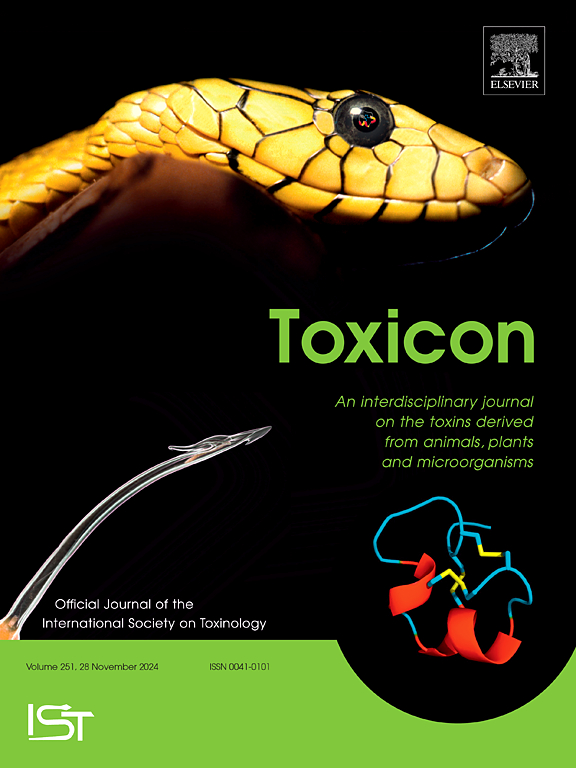Using corn cob powder to induce AFB1-degrading enzyme production in Cladosporium uredinicola HSK8 for detoxification purposes
IF 2.6
4区 医学
Q2 PHARMACOLOGY & PHARMACY
引用次数: 0
Abstract
Aflatoxin B1 (AFB1) is a highly toxic mycotoxin that contaminates food sources and poses serious health risks. This study examines Cladosporium uredinicola HSK8's ability to degrade AFB1. It was demonstrated that the hydrolysis of corn cob powder, following high-temperature treatment, generates derivatives such as furfural and vanillin, which stimulate the production of various AFB1-degrading enzymes by C. uredinicola HSK8. The total enzymatic activity reached a peak of 3750 U/mL in fermentation broth with 3 % corn cob powder. Two AFB1-degrading enzymes were further isolated, purified and analyzed. The results showed that enzymes can disrupt both the furan and benzene rings, exhibiting strong catalytic activity. The results suggested corn cob powder as a complex carbon source not only promotes the growth of C. uredinicola but also induces the production of AFB1-degrading enzymes. Therefore, the fermentation broth of C. uredinicola HSK8 cultured with corn cob powder holds great potential for the detoxification of AFB1 in food and feed.

求助全文
约1分钟内获得全文
求助全文
来源期刊

Toxicon
医学-毒理学
CiteScore
4.80
自引率
10.70%
发文量
358
审稿时长
68 days
期刊介绍:
Toxicon has an open access mirror Toxicon: X, sharing the same aims and scope, editorial team, submission system and rigorous peer review. An introductory offer Toxicon: X - full waiver of the Open Access fee.
Toxicon''s "aims and scope" are to publish:
-articles containing the results of original research on problems related to toxins derived from animals, plants and microorganisms
-papers on novel findings related to the chemical, pharmacological, toxicological, and immunological properties of natural toxins
-molecular biological studies of toxins and other genes from poisonous and venomous organisms that advance understanding of the role or function of toxins
-clinical observations on poisoning and envenoming where a new therapeutic principle has been proposed or a decidedly superior clinical result has been obtained.
-material on the use of toxins as tools in studying biological processes and material on subjects related to venom and antivenom problems.
-articles on the translational application of toxins, for example as drugs and insecticides
-epidemiological studies on envenoming or poisoning, so long as they highlight a previously unrecognised medical problem or provide insight into the prevention or medical treatment of envenoming or poisoning. Retrospective surveys of hospital records, especially those lacking species identification, will not be considered for publication. Properly designed prospective community-based surveys are strongly encouraged.
-articles describing well-known activities of venoms, such as antibacterial, anticancer, and analgesic activities of arachnid venoms, without any attempt to define the mechanism of action or purify the active component, will not be considered for publication in Toxicon.
-review articles on problems related to toxinology.
To encourage the exchange of ideas, sections of the journal may be devoted to Short Communications, Letters to the Editor and activities of the affiliated societies.
 求助内容:
求助内容: 应助结果提醒方式:
应助结果提醒方式:


